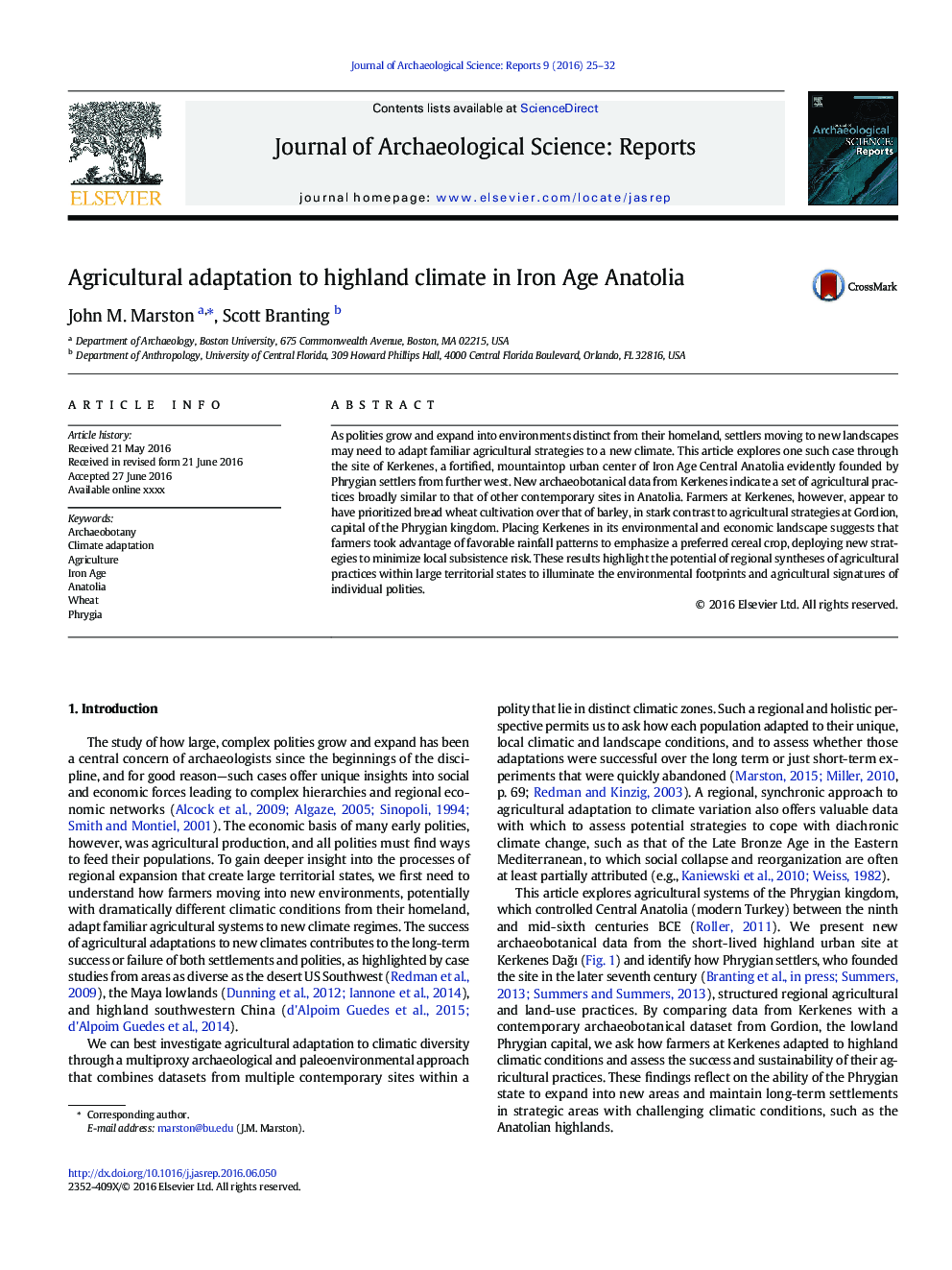| Article ID | Journal | Published Year | Pages | File Type |
|---|---|---|---|---|
| 7445273 | Journal of Archaeological Science: Reports | 2016 | 8 Pages |
Abstract
As polities grow and expand into environments distinct from their homeland, settlers moving to new landscapes may need to adapt familiar agricultural strategies to a new climate. This article explores one such case through the site of Kerkenes, a fortified, mountaintop urban center of Iron Age Central Anatolia evidently founded by Phrygian settlers from further west. New archaeobotanical data from Kerkenes indicate a set of agricultural practices broadly similar to that of other contemporary sites in Anatolia. Farmers at Kerkenes, however, appear to have prioritized bread wheat cultivation over that of barley, in stark contrast to agricultural strategies at Gordion, capital of the Phrygian kingdom. Placing Kerkenes in its environmental and economic landscape suggests that farmers took advantage of favorable rainfall patterns to emphasize a preferred cereal crop, deploying new strategies to minimize local subsistence risk. These results highlight the potential of regional syntheses of agricultural practices within large territorial states to illuminate the environmental footprints and agricultural signatures of individual polities.
Related Topics
Social Sciences and Humanities
Arts and Humanities
History
Authors
John M. Marston, Scott Branting,
